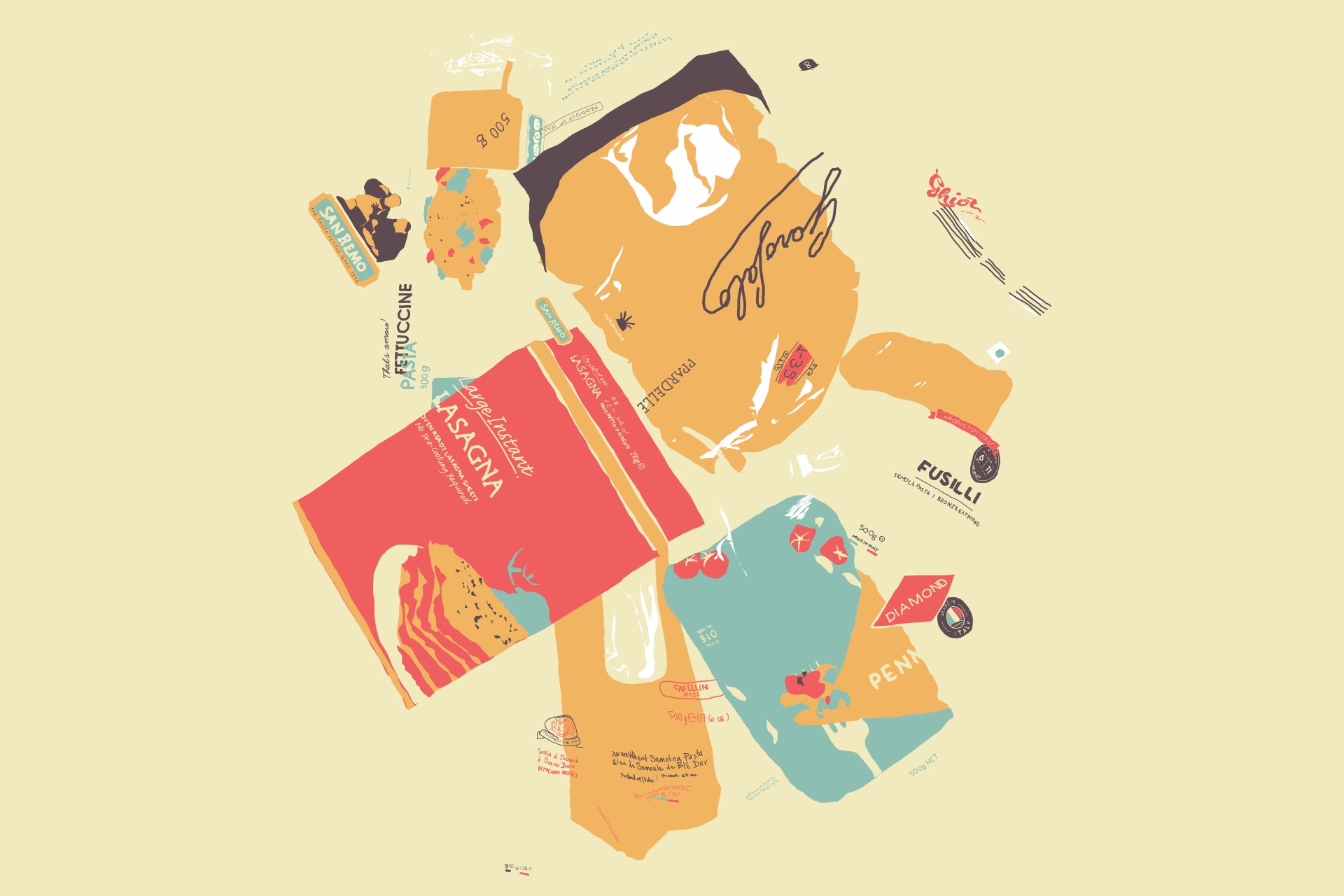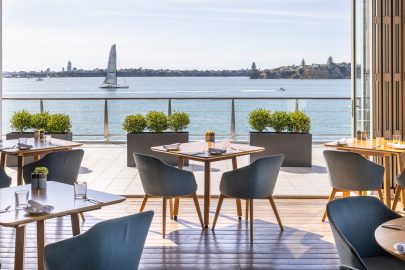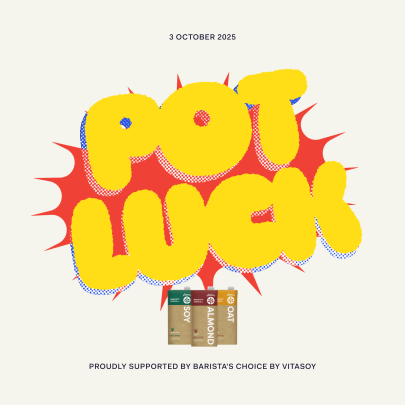Mar 19, 2024 Food
No area of the supermarket leaves me quite as befuddled as the pasta aisle. The shelves offer endless shapes, brands, options – some costing a dollar, others twelve times that — but they all contain variations of the two same base ingredients: flour and water. Could all these pastas really be that different if they’re made of literally the same thing?
Yes! Of course! In New Zealand we are quick to appreciate the variation between brands of chicken, cheese or yoghurt, yet we’re just as quick to mindlessly grab a packet of pasta without thinking about the brand, the quality of the ingredients used, the country of origin or whether the shape goes with the sauce we’re making (a huge topic in itself, for a separate article). But choosing pasta deserves as much TLC as any other part of our grocery shop.
My boyfriend is Italian, and a chef, and while I love him for many important reasons, the fact he cooks me pasta for lunch several times a week is right up there. As a woman whose love language is food — more specifically complex carbohydrates — I count my blessings every day. Early on in our relationship I was struck by a major difference in the way he and I have lived our lives: I have always proudly bought the once-upon-a-time 99-cent pasta (I was and forever will be an Otago University student, after all), but he never, ever did. Hoping this clear difference wasn’t a deal breaker, I asked him why. His answer changed my perspective on pasta forever.
So, what did this Italian tell me about what makes a packet of pasta good?
First, not all flour is the same. Different countries have different food production laws, especially in whether genetically modified organisms are allowed (in Italy they are not). Different types of flour will affect the overall taste and texture of the pasta as well as the way we digest it.
The drying process is equally important. Higher-quality pasta is dried at a low temperature for a long time. Poorer-quality pasta is more brittle and yellow in colour, because of the fast and hot drying. The common misconception that dried pasta is not as good as fresh – not true! – most likely comes from people having only experienced the inferior, quick-dried version.
The equipment used can also affect the quality of the pasta. A trafila is used to push out the final product in the correct shape, and the ones made from brass are the best, because they produce a pasta with a rougher surface, more amenable to clinging sauce. These pastas are also more porous, making them easier to digest.
Then there is the egg issue. Oftentimes, if a pasta has eggs, it is fresh – and in Italy would be made at home. In the New Zealand supermarket, most dried pastas do not contain egg, most fresh ones do. Neither recipe is better or more traditional or more delicious than the other, just different, and – as egg pasta is slightly richer than that without eggs – sometimes paired with slightly different sauces.
With this information in mind, I tried a non-exhaustive range of pasta brands available in the local supermarket and ranked them in order from the best to, well, not the best.
1. Garofalo Pasta (of any shape, frankly)
$8 for 500g
While on the pricier side, this pasta is several dollars less that some of its premium competitors, and noticeably better than the cheaper alternatives. Try it plain and you’ll instantly taste the difference. When I first cooked Garofalo, I finally understood the difference between chewy and al dente. Al dente means ‘to the tooth’, and describes the way pasta should be cooked — with a little bite remaining. I like Garofalo’s bundles of pasta, especially their pappardelle, more than their long packets of straight pasta. They’re just more fun. But they’re all great.
2. Ghiotti Spaghetti
$5 for 500g
This is another great option and is only a couple of dollars more than budget pasta brands. And the investment generally balances out: if I spend more on the pasta, I will usually spend less on the sauce because the flavour of the pasta is so good it requires less from its accompaniment. The texture of Ghiotti is slightly smoother and softer than Garofalo, which some people prefer.
3. Countdown Fettuccine
$2.30 for 500g — BEST VALUE
Look, she’s not the best of the best, but Countdown brand spaghetti pulled me through some dark times in university, so I will never disrespect her. Is the pasta chewy instead of al dente? A little. Is it a great price? Absolutely! If I am buying an inexpensive pasta, which I still do for some uses, it’s Countdown brand. The fettuccine is the same price as the spaghetti, but it just feels fancier. Fettuccine it is.
4. Rustichella Rigatoni
$12.49 for 500g
Rustichella is good — but sadly isn’t worth the price tag. I love the packaging, but I remind myself that I’m shopping not for art, but for my dinner.
5. Diamond Penne
$2.79 for 500g
In the value category, Diamond doesn’t quite stand up to the Countdown home brand. Still, if you frequent the other sibling of the supermarket duopoly, you still have a great budget option in Diamond. I especially enjoy their penne — on the thicker side, but I like that.
6. San Remo Large Instant Lasagna $3.89 for 375g
I had to include San Remo because it’s what I grew up with, so the taste is nostalgic for me. I don’t buy their spaghetti anymore, but I love these lasagna sheets. Making lasagna is a tough feat, my friends, so we should make things easier for ourselves at the very end when we’re losing the will to continue. These sheets cook quickly in the lasagna from raw.
7. Bertagni Ricotta and Spinach Grandi Tondi
$8.29 for 100g
I don’t often buy fresh pasta from the supermarket, but when I do, a bowl of this ravioli with a fat glass of red wine is a bloody great night for me. This is the best fresh ravioli I can find in supermarkets. With a little butter, lemon, garlic, it is perfect. I can even make two dinners from it (no more, trust me).
8. Value Linguine
$1.89 for 500g
No matter how much I stir, the Value linguine always, always sticks together. As someone who has too many gut problems to list, I also find myself feeling the post-pasta gas in ways that I don’t wish on my worst enemy. Still, it is a great price, and the spaghetti option is better than the linguine. Do not buy the linguine.
9. Barilla Penne
$3.89 for 500g
Barilla really shows the yellow colour which is a result of hot, fast drying. For just over a dollar more, you can get a product of a much higher quality. Sorry, Barilla.
10. Delmaine Ravioli
$6.29 for 300g
You know how when some people cook all their food tastes the same? Delmaine achieves this in a brand sense. In almost any product, there it is again, the distinctive Delmaine flavour. Unfortunately, I’m not sure I like it. Sometimes I can’t even tell what flavour the filling in this ravioli is supposed to be, though it says it on the packet. Not worth the salt you boil it in.






